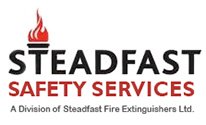Automatic fire extinguishers have been in use for over 100 years now. With new technology several advances have been made regarding the quality, designs and efficiency of the sprinklers. While many people now appreciate the effectiveness of the sprinklers in fire protection, the worry has largely been on the design and suitability aspects. The question most people ask is whether the sprinklers can be installed to match a building’s aesthetic qualities without being obtrusive.
Modern day sprinklers factor all these concerns and are designed to be flush with the wall and ceiling. Some designs can even be concealed and most are much smaller than the average smoke detector. Here are some common types of fire sprinkler systems.
Control Mode Sprinklers
This types of sprinklers serve as the standard sprinkler design. They work by lowering the core temperature of a fire to a level the fire cannot sustain its own heat. This is achieved by dumping water directly on the fire as soon as it breaks out. They also soak up any adjacent material that is flammable. This stops the spread of fire.
Fast Response Sprinklers
As their name suggests, they respond to fire much quicker than any other design. They are at times used for light hazard sections.
Decorator Sprinklers
They are also called concealed sprinklers and they are designed to blend with the ceiling. The head is usually recessed and there is a cap over it which is colored to match the theme colors. The cap is held in place with glue which dissolves and comes off in case of a fire. These kinds of sprinklers are most favored in homes.
Wet Pipe or Dry Pipe Sprinklers
All sprinklers are divided in these two categories. With wet pipe sprinklers the water is always running in the pipes. They are easier to maintain and they are found in homes that are constantly heated. Dry pipe sprinklers on the other hand are filled with compressed air and connected to the water source with a valve. In case of a fire, the valve is tripped and water fills the pipes. It is common in building not regularly heated since it prevents the pipes from bursting and also freezing of the water especially for people in colder climates.
Low Pressure Sprinklers
These are the ideal kinds of sprinklers for tall buildings. This is because the upper floors may have little water pressure. They are cost-effective in such scenarios since they are able to reduce the pipe size and the need for a pump.
Suppression Sprinklers
This type of sprinkler is designed to offer fire protection in buildings containing flammable materials. They work by flooding the core of the fire directly instead of pre-wetting the area. This lowers the temperatures faster and efficiently.
Water Mist Sprinklers
This type of sprinkler fights fire by reducing both its oxygen and heat. It releases high pressure mist instead of water and the mist is converted to steam when it comes in contact with the fire’s heat. While converting to steam the water droplets deny the fire oxygen to fan it further. The mist is also a powerful cooling agent that takes away the radiant heat of the fire preventing further spread.





